The South China Sea is a disputed region in the Pacific Ocean where several countries, including China and the Philippines, have territorial claims. The Philippine Navy has been stationing its forces on an old warship called BRP Sierra Madre since 1999 to assert their claim over Second Thomas Shoal. However, this has led to repeated confrontations with Chinese coast guard vessels who are also present in the area and have used water cannons against Philippine boats multiple times.
Philippine Navy's Presence on BRP Sierra Madre Leads to Repeated Confrontations with Chinese Coast Guard in South China Sea
Repeated confrontations with Chinese coast guard vessels who are also present in the area and have used water cannons against Philippine boats multiple times.
The South China Sea is a disputed region in the Pacific Ocean where several countries, including China and the Philippines, have territorial claims. The Philippine Navy has been stationing its forces on an old warship called BRP Sierra Madre since 1999 to assert their claim over Second Thomas Shoal.
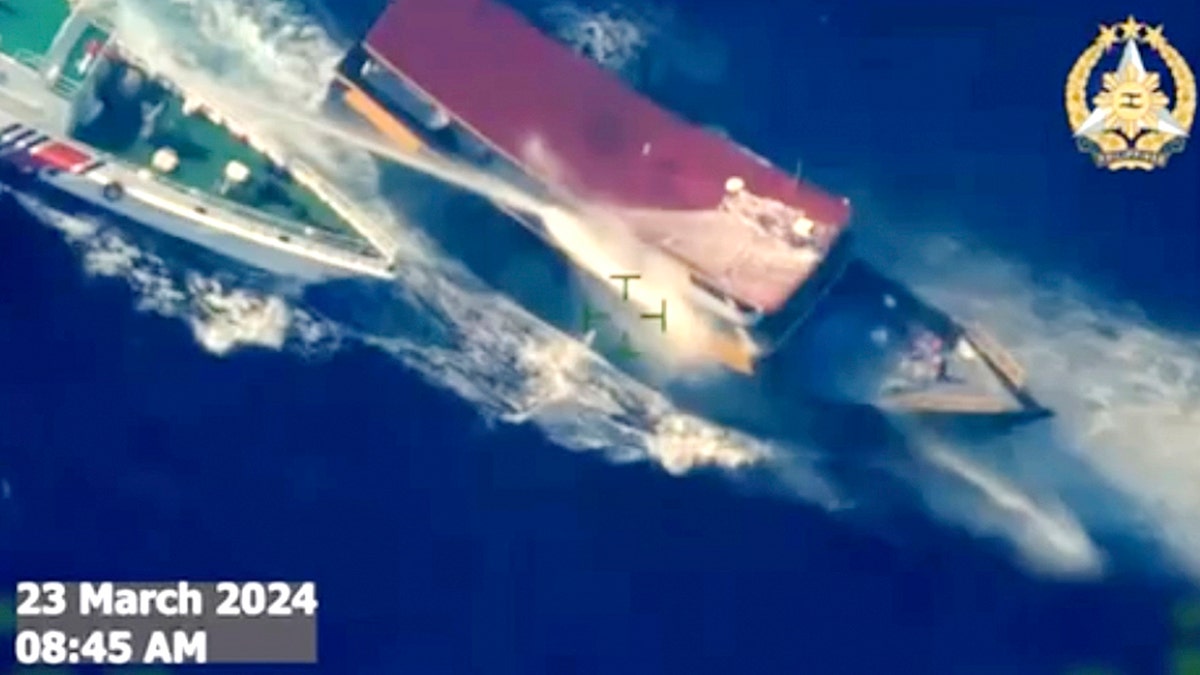




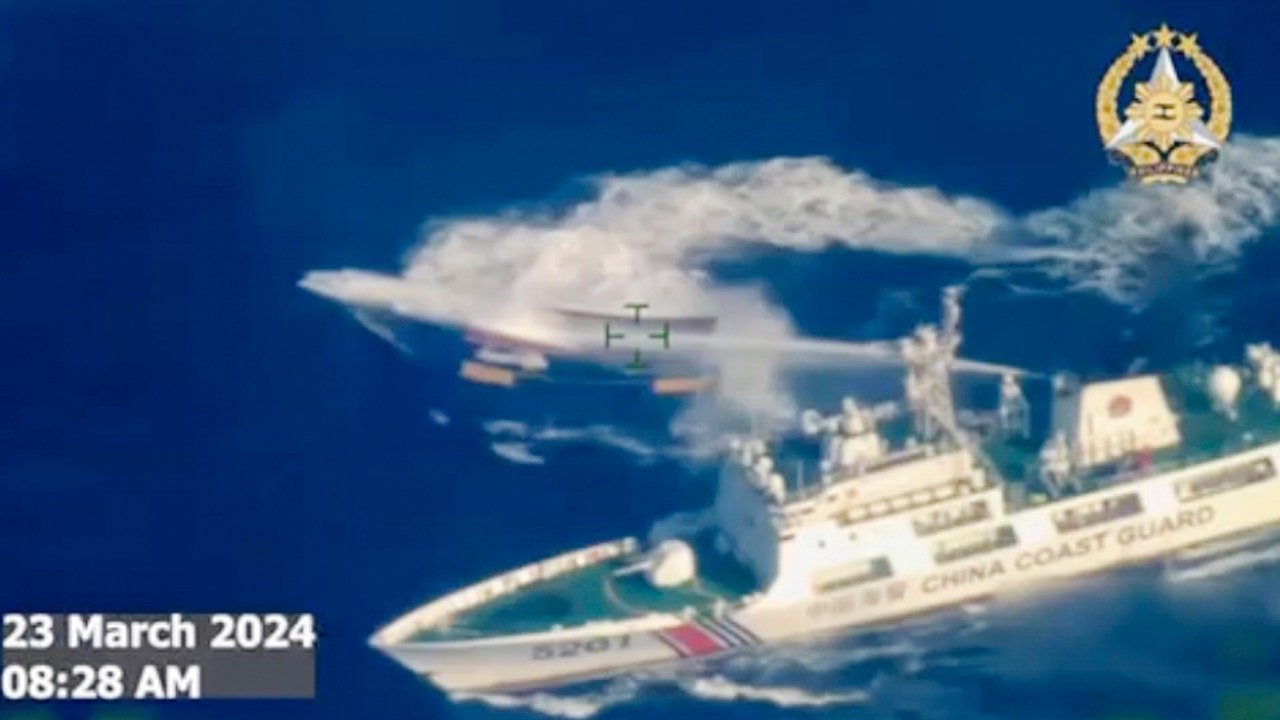
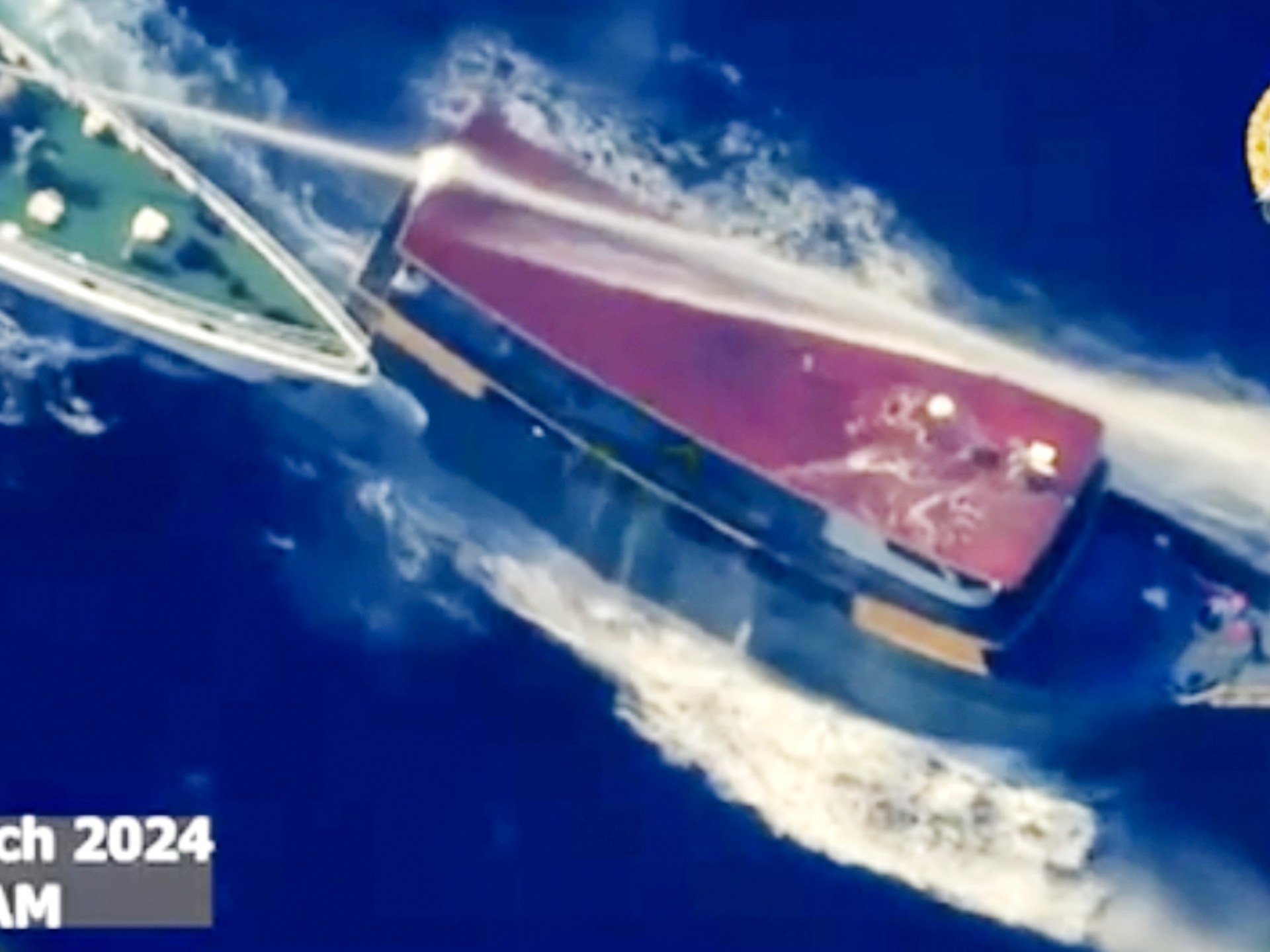
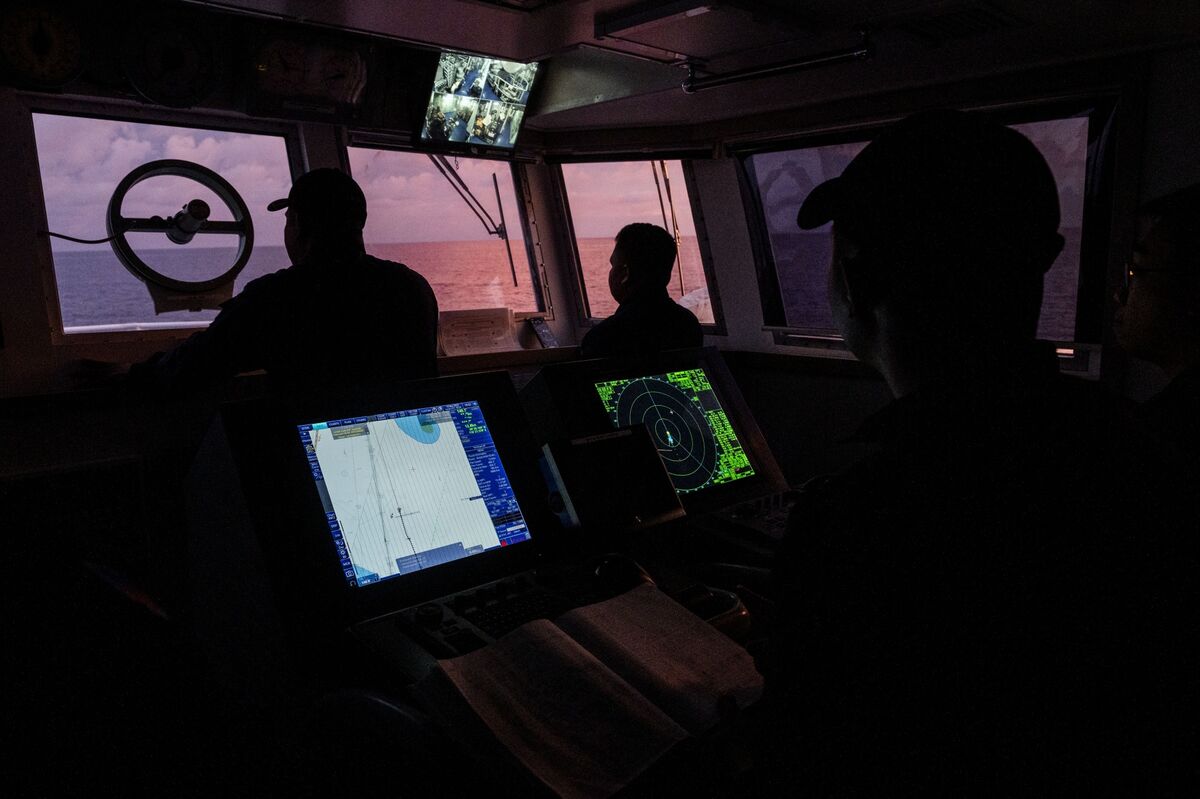
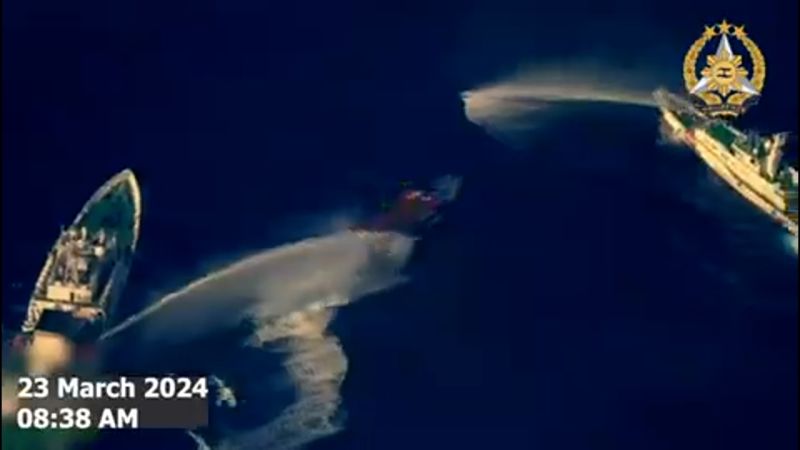
Confidence
80%
Doubts
- It is not clear if there are any other countries besides China and the Philippines that also have territorial claims in the South China Sea.
Sources
66%
China coast guard water-cannons Philippine ship days after US backs Manila in disputed sea
CNN News Site: In-Depth Reporting and Analysis with Some Financial Conflicts and Sensational Language James Legge, Saturday, 23 March 2024 06:07Unique Points
- China's coast guard used water cannon against Philippine boats in a contested area of the South China Sea on Saturday.
- The skirmish comes just days after US Secretary of State Antony Blinken reiterated Washington's commitment to defending Philippine access to the vast waterway, which China claims sovereignty over, sparking increasing clashes with its neighbors in recent years.
- Beijing and Manila have long contested the Second Thomas Shoal, which sits about 200 kilometers (125 miles) from the coast of Palawan.
- In a confrontation two weeks ago, a Chinese coast guard vessel used water cannon against a Philippine boat shattering its glass panel and injuring four sailors.
Accuracy
- The latest run-in came just four days after Secretary of State Blinken told a news conference in Manila that the United States had an ironclad commitment to defending the Philippines in the South China Sea.
Deception (50%)
The article is deceptive in several ways. Firstly, it states that the skirmish occurred just days after US Secretary of State Antony Blinken reiterated Washington's commitment to defending Philippine access to the South China Sea. However, this statement is misleading as there was no new announcement made by Blinken regarding this issue. Secondly, the article quotes a Chinese coast guard spokesperson stating that Beijing and Manila have long contested the Second Thomas Shoal which sits about 200 kilometers (125 miles) from the coast of Palawan. However, it fails to mention that China has been occupying this shoal for decades and has built artificial islands on top of it, effectively claiming sovereignty over a large portion of the South China Sea. Thirdly, the article quotes Philippine Coast Guard spokesperson Jay Tarriela stating that Beijing and Manila have shown a disregard for the Convention on the International Regulations for Preventing Collisions at Sea. However, this statement is misleading as it implies that both countries are responsible for violating international law when in fact China has been accused of multiple incidents involving illegal fishing, oil drilling, and territorial claims in the South China Sea. Lastly, the article quotes a Philippine Coast Guard vessel stating that they were impounded by Chinese coast guard ships and two Chinese maritime militia vessels which is not true as per the AFP's statement.- The skirmish comes just days after US Secretary of State Antony Blinken reiterated Washington's commitment to defending Philippine access to the South China Sea. However, this statement is misleading as there was no new announcement made by Blinken regarding this issue.
Fallacies (70%)
The article contains several fallacies. The author uses an appeal to authority by citing the US Secretary of State's statement without providing any evidence or context for his claim. Additionally, the author presents a dichotomous depiction of China and its actions in the South China Sea as being aggressive and illegal while ignoring similar actions taken by other countries in the region. The article also contains inflammatory rhetoric when it describes Chinese coast guard vessels as performing a 'dangerous maneuver' without providing any evidence to support this claim.- The author uses an appeal to authority by citing US Secretary of State Antony Blinken's statement without providing any evidence or context for his claim. For example, the article states that 'Secretary of State Blinken reiterated Washington's commitment to defending Philippine access to the vast waterway', but it does not provide any information on how this commitment was made or what specific actions were taken.
- The author presents a dichotomous depiction of China and its actions in the South China Sea as being aggressive and illegal while ignoring similar actions taken by other countries in the region. For example, the article states that 'China claims sovereignty over' the Second Thomas Shoal, but it does not mention any other country's claim to this area or their own military presence in the South China Sea.
- The author uses inflammatory rhetoric when it describes Chinese coast guard vessels as performing a 'dangerous maneuver'. For example, the article states that 'the AFP accused the Chinese coast guard of performing a dangerous maneuver by crossing the bow of the resupply vessel before using water cannon', but it does not provide any evidence to support this claim or explain what made this action dangerous.
Bias (80%)
The article contains examples of religious bias and monetary bias. The author uses language that depicts China as an oppressive regime with a disregard for international laws, while portraying the Philippines as a victim in need of protection from China's aggression. Additionally, the use of phrases such as 'China claims sovereignty over' and 'Philippine access to the vast waterway', implies that there is an inherent conflict between these two countries which may not be entirely accurate.- Additionally, the use of phrases such as 'China claims sovereignty over' and 'Philippine access to the vast waterway', implies that there is an inherent conflict between these two countries which may not be entirely accurate.
- The article also uses language that implies there is an inherent conflict between these two countries which may not be entirely accurate. For example, it says 'Philippine access to the vast waterway', implying that China has no right to control this area.
- The article uses language that depicts China as an oppressive regime with a disregard for international laws, while portraying the Philippines as a victim in need of protection from China's aggression. For example, it says 'China has shown a disregard for the Convention on the International Regulations for Preventing Collisions at Sea.'
Site Conflicts Of Interest (50%)
None Found At Time Of Publication
Author Conflicts Of Interest (50%)
None Found At Time Of Publication
81%
Chinese coast guard uses water cannon on Philippine boat as tensions rise near Second Thomas Shoal
Fox News Media Lawrence Richard Saturday, 23 March 2024 12:33Unique Points
- China's coast guard used water cannon against Philippine boats in a contested area of the South China Sea on Saturday.
- The skirmish comes just days after US Secretary of State Antony Blinken reiterated Washington's commitment to defending Philippine access to the vast waterway, which China claims sovereignty over, sparking increasing clashes with its neighbors in recent years.
- In a confrontation two weeks ago, a Chinese coast guard vessel used water cannon against a Philippine boat shattering its glass panel and injuring four sailors.
- The UM4 supply boat sustained heavy damages due to the continued blasting of water cannons from the CCG vessels.
Accuracy
- The Chinese coast guard used water cannon against a Philippine supply boat in the disputed South China Sea on Saturday.
- China vetoed US resolution calling for an immediate cease-fire in Gaza.
Deception (80%)
The article is deceptive in several ways. Firstly, the title of the article implies that China used water cannons on a Philippine boat as tensions rise near Second Thomas Shoal. However, this statement is misleading because it does not provide any context or background information about what led to the confrontation between Chinese and Filipino forces in this region. The article also uses sensationalist language such as 'tensions rise' which creates a sense of urgency and danger without providing any concrete evidence to support these claims.- The title of the article implies that China used water cannons on a Philippine boat as tensions rise near Second Thomas Shoal. However, this statement is misleading because it does not provide any context or background information about what led to the confrontation between Chinese and Filipino forces in this region.
- The article uses sensationalist language such as 'tensions rise' which creates a sense of urgency and danger without providing any concrete evidence to support these claims.
Fallacies (70%)
None Found At Time Of Publication
Bias (85%)
The article is biased towards the Chinese government's actions in the South China Sea. The author uses language that portrays the Philippine supply boat as a threat to Chinese territorial waters and implies that it was responsible for provoking the confrontation with no evidence presented. Additionally, there are multiple instances of quotes from official sources such as Beijing and Filipino officials which further reinforces this bias.- At the time, Beijing said its coast guard ships had responded after the Philippine vessels ignored warnings and encroached into what it claimed were its territorial waters.
- Beijing said its coast guard ships had responded after the Philippine vessels ignored warnings and encroached into what it claimed were its territorial waters.
- The shoal, occupied by Philippine navy personnel since the late 1990s, has recently become the backdrop for an increasingly tense territorial standoff with the Chinese coast guard.
Site Conflicts Of Interest (100%)
None Found At Time Of Publication
Author Conflicts Of Interest (100%)
None Found At Time Of Publication
76%
Philippines accuses China of new water cannon attacks in South China Sea
Al Jazeera Media Network Al Jazeera Saturday, 23 March 2024 12:35Unique Points
- Two countries involved in a second incident this month at disputed Second Thomas Shoal.
- “The UM4 supply boat sustained heavy damages due to the continued blasting of water cannons from the CCG vessels.”
- “Manila has revived and expanded its military ties with the United States as tensions rise in South China Sea. ”
- “Two days after US Secretary of State Antony Blinken visited the Philippines, Chinese coastguard tried to drive away Filipino scientists who landed on two cays near Scarborough Shoal.”
Accuracy
- The UM4 supply boat sustained heavy damages due to the continued blasting of water cannons from the CCG vessels.
Deception (100%)
None Found At Time Of Publication
Fallacies (70%)
None Found At Time Of Publication
Bias (80%)
The article is biased towards the Philippines and against China. The author uses language that dehumanizes China by referring to their coastguard as 'water cannon' instead of using a neutral term such as 'maritime force'. Additionally, the author quotes Gan Yu from the Chinese Coast Guard without providing any context or counter-argument, which is not fair. Furthermore, the article only provides one side of the story and does not provide an opportunity for China to respond. The examples provided are also biased towards a specific position.- Additionally, the article only provides one side of the story and does not provide an opportunity for China to respond.
- The author uses language that dehumanizes China by referring to their coastguard as 'water cannon' instead of using a neutral term such as 'maritime force'.
- <u>
Site Conflicts Of Interest (0%)
Al Jazeera has a conflict of interest on the topic of China and its actions in the South China Sea. The site is owned by Qatar Media Corporation (QMC), which has financial ties to Chinese state-owned enterprises through investments made by Qatari sovereign wealth fund, QIA.- Al Jazeera has been criticized for being too sympathetic towards Chinese interests. In 2018, it was reported that the site had received funding from a Chinese state-owned company called CCTV International.
- Al Jazeera's parent company, QMC, has invested in several Chinese state-owned enterprises. For example, in 2019 it was reported that the company had a $5 billion stake in China National Chemical Corporation (ChemChina). This investment could potentially influence Al Jazeera's coverage of issues related to China and its actions in the South China Sea.
Author Conflicts Of Interest (100%)
None Found At Time Of Publication
68%
Philippines Says China Made Risky Sea Moves, Used Chopper
Bloomberg News Now Andreo Calonzo Saturday, 23 March 2024 12:35Unique Points
- The Philippines said China made dangerous moves and deployed a chopper during Manila's research mission to South China Sea.
- A Philippine Coast Guard ship tried to prevent a fisheries bureau vessel from reaching sand bars off Manila-administered Thitu Island to check the status of marine life, Philippine Coast Guard spokesperson Commodore Jay Tarriela told a group of journalists who joined this week's maritime mission.
Accuracy
- China's coast guard used water cannon against Philippine boats in a contested area of the South China Sea on Saturday.
Deception (50%)
The article is deceptive in several ways. Firstly, the author uses sensationalist language such as 'dangerous sea moves' and 'latest flare-up', which are not supported by any evidence presented in the article. Secondly, the author quotes a spokesperson from China Coast Guard stating that they tried to prevent Philippine fisheries bureau vessel without providing any context or explanation of why this action was taken. This is an example of selective reporting as it only reports details that support the author's position while ignoring other important information. Lastly, there are no sources disclosed in the article which makes it difficult for readers to verify the accuracy of the claims made.- The use of sensationalist language such as 'dangerous sea moves' and 'latest flare-up'
- Selective reporting by quoting a spokesperson from China Coast Guard without providing any context or explanation
- No sources disclosed in the article
Fallacies (85%)
The article contains an appeal to authority fallacy. The author cites a statement from the Philippine Coast Guard spokesperson without providing any evidence or context for their claim.- > A China Coast Guard ship tried to prevent a Philippine fisheries bureau vessel from reaching sand bars off Manila-administered Thitu Island to check the status of marine life, Philippine Coast Guard spokesperson Commodore Jay Tarriela told a group of journalists who joined this week's maritime mission.
Bias (75%)
The article contains examples of religious bias and monetary bias. The author uses language that depicts China as a threat to the Philippines' sovereignty over disputed waters in the South China Sea.- > A China Coast Guard ship tried to prevent a Philippine fisheries bureau vessel from reaching sand bars off Manila-administered Thitu Island
- > The latest flare-up in lingering tensions between the two nations over disputed waters
Site Conflicts Of Interest (50%)
None Found At Time Of Publication
Author Conflicts Of Interest (50%)
None Found At Time Of Publication
90%
Chinese coast guard hits Philippine boat with water cannons in disputed sea, causing injuries
The Associated Press News Saturday, 23 March 2024 04:44Unique Points
- Philippine supply boat Unaizah May 4 has been damaged by the Chinese coast guard's water cannon assault twice in March alone
- The repeated high-seas confrontations have sparked fears they could degenerate into a larger conflict that could bring China and the United States into a collision
Accuracy
- Chinese coast guard hits Philippine boat with water cannons in disputed sea
Deception (100%)
None Found At Time Of Publication
Fallacies (85%)
The article contains several fallacies. The author uses an appeal to authority by stating that the United States and Japan immediately expressed their support for the Philippines. This is not a logical fallacy as it is simply reporting on statements made by other sources. However, this statement does suggest bias towards one side of the conflict, which could be seen as inflammatory rhetoric.- MANILA, Philippines (AP) — Chinese coast guard ships hit a Philippine supply boat with water cannons Saturday in the latest confrontation near a disputed shoal in the South China Sea, causing injuries to its navy crew members and heavy damage to the wooden vessel, Philippine officials said.
Bias (85%)
The author demonstrates bias by selectively quoting and describing actions of the Chinese coast guard while ignoring similar or worse actions from the Philippine side. The article implies that China is solely responsible for escalating tensions in the South China Sea.- `Another motorboat managed to transport the new batch of Filipino sailors and supplies to the Philippine outpost in the shallows of the shoal despite the Chinese coast guard’s attempt to block them by placing a floating barrier in the waters, Philippine officials said.`
- `It's been occupied by a small contingent of Philippine navy and marines on a marooned warship since 1999`
- `The far-flung shoal has been the scene of repeated confrontations between Chinese and Philippine vessels over the past year.`
- `The United States and Japan immediately expressed their support to the Philippines, as well as alarm over Chinese forces’ aggression off the Second Thomas Shoal`
Site Conflicts Of Interest (100%)
None Found At Time Of Publication
Author Conflicts Of Interest (0%)
None Found At Time Of Publication